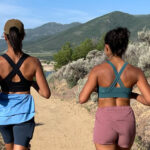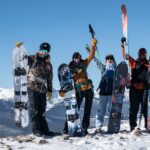Training Tips: Alpine and Mountain Running 101
The trails are dry, the days are long, and the wildflowers are popping off. That can only mean one thing: mountain running season is here! But what is mountain running, and what are some important things to know before heading into the alpine? When turning our gaze towards the higher points of the world, transitioning from road running and trail running into the peaks and basins of the alpine that inspires all of us, there are a few critical things to know.
Because alpine and mountain running are almost completely different sports from road running and trail running, I sat down with a few experienced friends to round up a few tips to share.
The Friends:
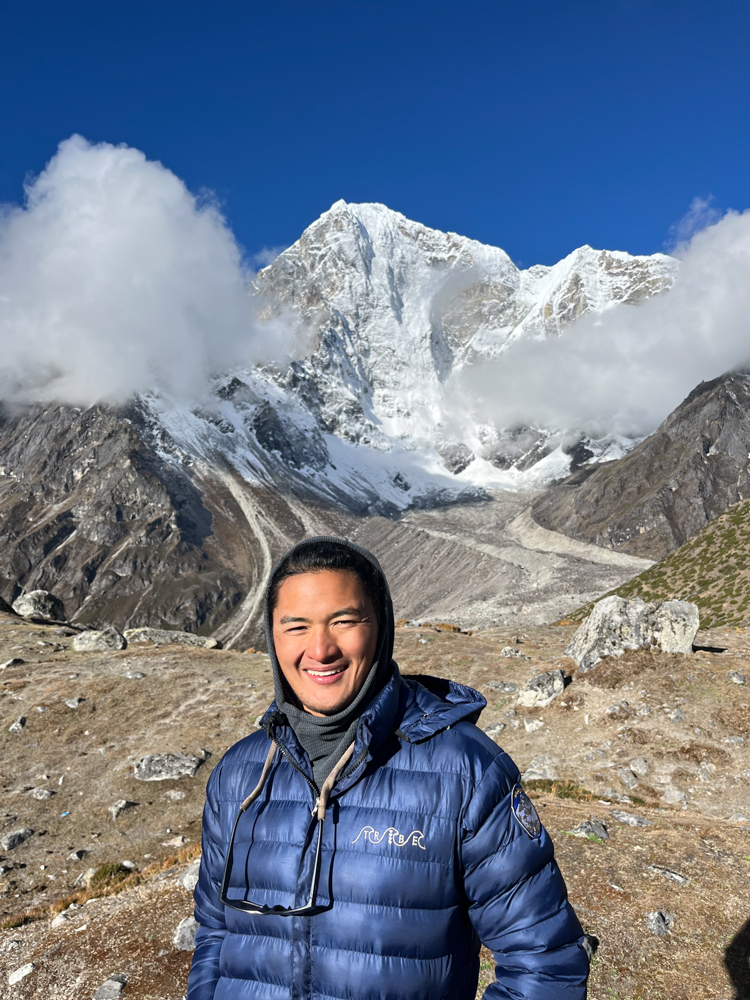
Dillon Quitugua is the co-founder of a community called Tribe Collective, which empowers and advocates for Asian Pacific Islanders to get out on the trails. He aims to be the first Chamorro (indigenous to the Mariana Islands) to climb Mt. Everest.
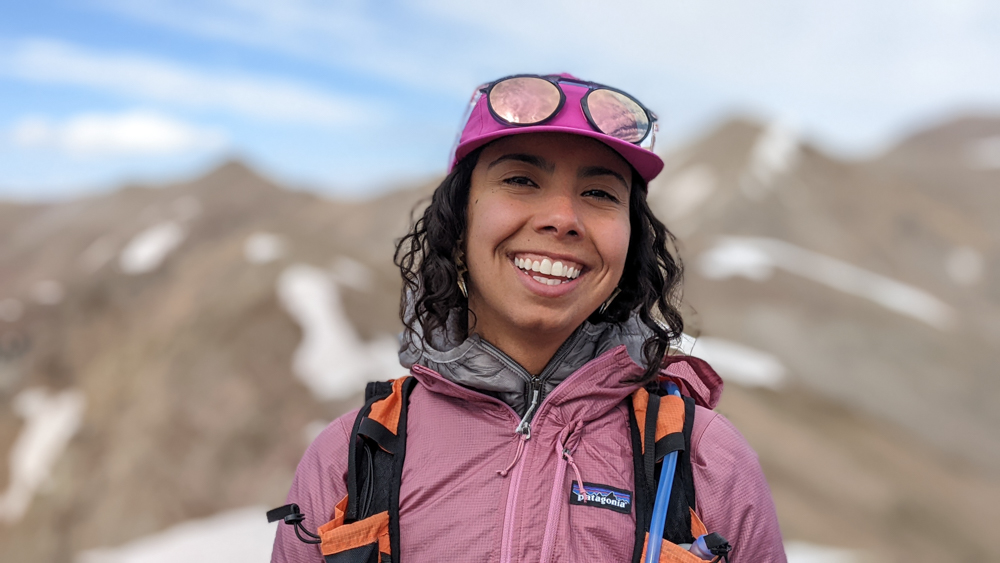
Vanessa Chavarriaga is a Colombian immigrant, mountain athlete, and environmental sociologist. Through her storytelling and advocacy, she strives to break down barriers for BIPOC in the outdoors and improve our relationships with nature.
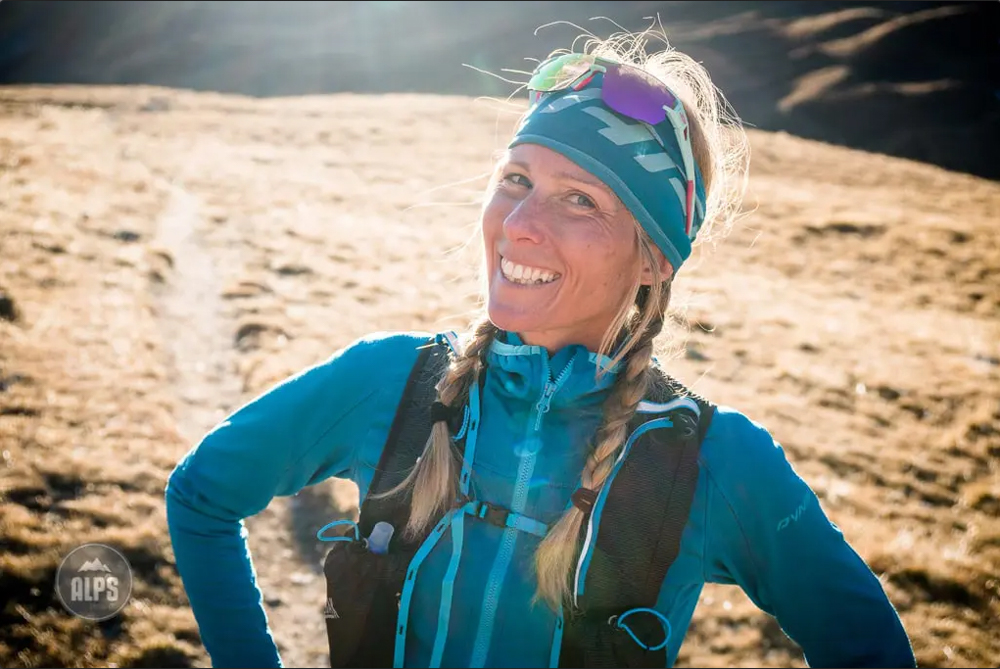
Kim Strom is a mountain runner and cancer survivor. As part of the PatitucciPhoto team, she works as a writer, photographer, athlete, and model. Her feature stories have appeared in Patagonia’s The Cleanest Line, Runner’s World, and Trail Runner as well as numerous outdoor blogs and other publications. She is also the Content Producer for Run the Alps, co-author of the Run the Alps Switzerland guidebook and the soon to publish Sierra Trail Runs: A Guide to the Eastside.
Kim co-created the online resources for trail running and mountain sports: AlpsInsight, Elevation, and the all new Sierra Trail Runs.
![Retrato de Felipe Tapia Nordenflycht / Portrait of Felipe Tapia Nordenflycht. Photo credit Leonardo Brasil.]](/wp-content/uploads/2022/07/Training-Tips-Alpine-and-Mountain-Running-101-Dirtbag-Dreams-3.jpg)
Felipe Tapia Nordenflycht grew up exploring the volcanoes and salt flats of the Atacama Region of Chile, where he learned to respect the harsh but bountiful landscapes of the most arid desert in the world. There, he developed a great appreciation for the people that strive to live in harmony with their environment.
Felipe traded the desert for the mountains when he moved to Colorado in 2012, but the awe and respect he feels when in nature hasn’t changed. Capturing moments from the natural world and the people who love and fight for it is the reason he picks up his camera every day.
What advice would you give to someone breaking into mountain and alpine running?
Vanessa Chavarriaga Posada
You don’t have to be fast to be a runner. Every person has their own pace, and no one pace is better than another. If speed is your goal, great! But there are many other ways to set goals and show up in the mountain running space that have little to do with speed. I was always very intimidated by running because fast speed isn’t my favorite way to move. Learning that I can not only run slow, but also walk the uphills, made me feel so much more welcome in this space.
Felipe Tapia Nordenflycht
To enjoy. Trail running is not always about speed. Plan food ahead, and water. If you are doing more than 15 miles I would strongly recommend to check where the water resources are and bring a filter.
Remember: mountain running and alpine frolicking should embody joy and connection to the big beautiful spaces you’re visiting as much as (if not more so) drive your achievement of a specific high point or objective.
Sink into the space: breathe it in. Slow it down, and remember why you’re out here in the first place.
What do YOU consider mountain running?
Dillon Quitugua
Mountain running is a rocky, arduous style of running that usually requires more grit, more gear, but leads to more adventure. Running in the mountains can take all day because it takes longer to get access to whereas trail running is as easy as getting anywhere off the road. Running mountains will require more preparation; you will need more food, more water, and a wider array of clothing.
Mountain running usually requires more climbing and vertical gain until you can get to a ridge line. Once you get there you can run in the most gorgeous and untouched places that the region has to offer.
All mountain running is trail running, but not all trail running is mountain running.
Dillon Quitugua
Kim Strom
Often I think the movement of mountain running does not look like the mechanics of running. There is much more variety in the movement, changes in stride, scrambling, and adjusting for whatever challenges arise in the terrain. While a lot of mountain running is done on the trail, it’s not bound to staying on them and can cross the line into easy mountaineering. So it takes on higher consequences that require appropriate mountain skills, the ability to navigate, and more decision-making.
![Kim Strom Dani Reyes-Acosta Yosemite Trail Mountain Run Photo Dan Patitucci ]](/wp-content/uploads/2022/07/Training-Tips-Alpine-and-Mountain-Running-101-Dirtbag-Dreams-1580.jpg)
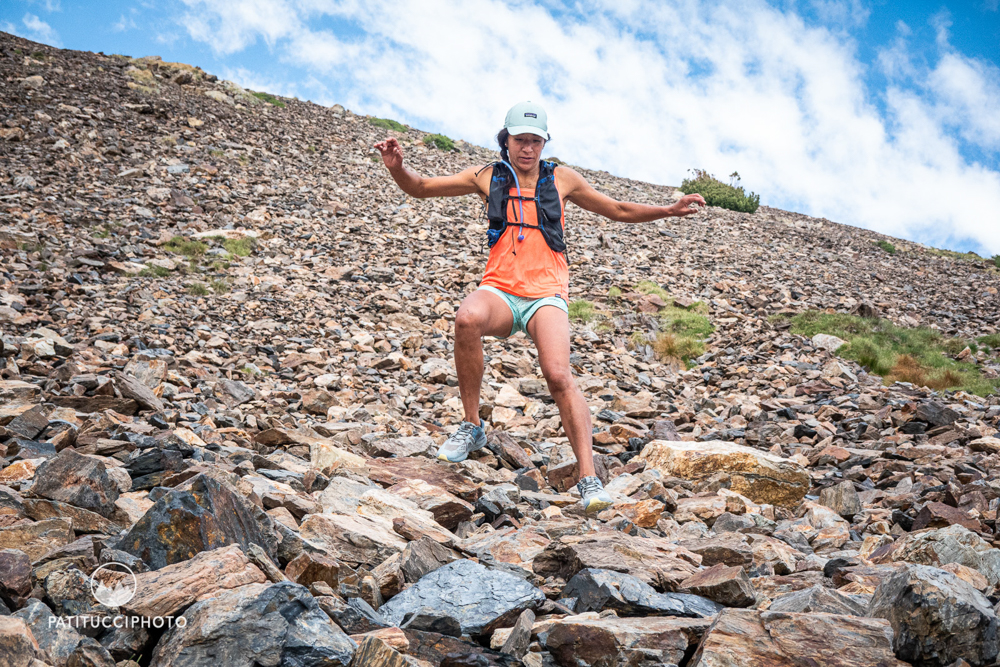
What’s one thing you wish you knew when you started that you know now about mountain running?
Dillon Quitugua
I wish I knew that the more altitude you gain, the more water you need to drink! Especially when you go above 15,000 feet elevation both water and slow ascent becomes crucial to safe ascending!
Kim Strom
Learning from stronger partners and building the skills – physical and mental – to become self-sufficient in the mountains is a long process, but one that is full of big beautiful days. Lots of time in the mountains creates a base of endurance, technique, and knowledge that lets you keep growing and learning and spending more time in the mountains. Which is what I think is the goal.
Vanessa Chavarriaga Posada
Nutrition is key! Female-identifying athletes are very likely to undernourish before, during, and after a big mountain run. Calories and carbs are your friend. Dialing in my nutrition and training my stomach unlocked a whole new level of endurance capacity and energy for me. I am very strict about eating every hour, on the hour when I go for long runs in the mountains. This prevents my energy from crashing and keeps my mind sharp so that I don’t physically crash!
Felipe Tapia Nordenflycht
Nutrition. Food is really important on long runs, and in all mountain running. Keep your body fueled. I’m really lucky that my wife makes the best organic and sustainable snacks for our long days out there. You should check her out on Instagram: find her @grittygourmet.

No matter what types of trails you have ahead of you this summer, remember: the big, wide open sky awaits to be greeted. When traveling on your feet to the higher reaches of the world, you just might have the experience of a lifetime—for better or worse.
Go prepared, stay stoked, and enjoy the trails ahead!



